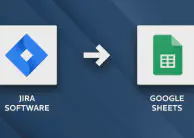The Web3 Product Manager
I can assure you, lots of it can be learned along the way, but I will show you some differences and challenges presented with web3 projects. If you aren’t yet familiar with all the crypto-specific terminology, I will explain everything as simple as possible.
Is the development process different?
Many of the web3 blockchain project are still evolving and have teething problems, but the engineer and founders behind some of these project are the greatest minds of our time. In most cases, the product you work with will be based on an existing blockchain. Many of the low-level technology teams haven’t found much value by adding PMs to their teams, e.g., the Ethereum Foundation has 97 employees and stewards a $500B with zero PMs.
As a product manager, you should be able to have intelligent discussions with the engineers in each of the products areas. Therefore, I see it as a necessity to have a basic understanding of what a blockchain is, what components are in place and which terminology to use.
If you work on a feature requirements for a new product increment, get the developers onboard to full grasp the scope and dependencies clearly. Developers with smart contract experience are sometimes specialists, they work only on their part of the integration. The blockchain part needs also be connected to a backend service and a frontend somehow. This can lead to more complex dependency chains, which the PM has to consider, during planning new features. Some integrations can only start working, if the smart contracts were deployed at least to a test network on the blockchain and the functionality is available.
Users and the community
It’s quite common that you have to do the user research, business development, and marketing directly, yourself. The user journey design can be tricky because first time users need to purchase or swap the projects token, load it to a wallet and only then entering the actual application.
PMs in other industries today rarely need to be involved with technical infrastructure decisions, but in a web3 project it may be different, since this could directly impact the end-user experience and planning.

Image by Brandon Bolender from Pixabay
Community building and open communication is the de-facto standard in the world of web3. The community is a key component for a project success and therefor important for the PM role. With open communication along all social channels, the team want to build trust for their product and convince investors and early adopters.
Planing vs. execution
Lately, more and more tech startups adapt the practice of publicly sharing their roadmap and better incorporate customers feedbacks. A public roadmap is also standard in crypto projects, since occasionally the projects works towards an ICO and wants to present the future milestones early.
The public roadmap should contain only high-level goals or features and nothing too specific, since the team need some flexibility during development to adjusts and finds their ways for delivering a certain functionality. But you cannot make all product decisions unilaterally and may not control your roadmap, since it requires all stakeholder to align plus customer demands.
You have to prioritize execution over vision/strategy because agility and flexibility is more important.
Communication and documentation is key
It’s often said that the product manager should be able to influence without having any formal authority. And web3 project can offer some really technical challenges for the team, so your interpersonal and communication skills are in high demand.
Documentation is also critical, and try to convince all team members to contribute because it will give a much broader view on the product. I don’t think you should write down every little detail about features and functionalities, but enough for everybody to know what and how we plan to do.
Public & Regulatory concern
More and more regulatory concern emerged the last couple of years. Some sort of regulation will be good for the stabilization of the market, but too many influence by governments and politics could destroy the entire philosophy of decentralisation. As product manager, we will be more involved with regulation and compliance to make the product save and trustworthy by users and regulators.
Depending on the product, you may have to meet high security criteria. The worst thing you could do is to underestimate the willpower of certain people to find exploits and weakness in your product to ruin the product or company. Security audits for smart contract or penetration tests are a common practice, but can’t save you from being targeted by a hacker. You must prioritize user security because with every transaction, there are funds at stake.
In the current market situation, the public visibility of web3 project is almost disappeared. It’s a fact, that people are only interested in crypto when it’s on the rises. But this difficult market condition also clears the ecosystem and enables a good project to focus and thrive before the next bull run occurs. This external market condition will also impact the PMs work, since the project, team motivation and overall success will be influenced by it.
Get started in web3 product management
With every technological evolution, it will take you some time, but with some curiosity in the potential of the blockchain technology, it will be easy to learn. I want to help you with some starting points:
Learn as much as possible
- Bitcoin Whitepaper
- Crypto Startup School
- Coin Bureau
- Web3 University
- And so much more…



